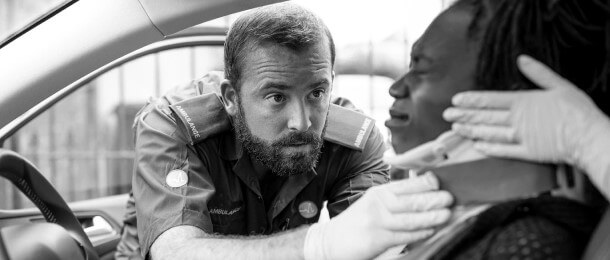News: Man in 60s injured in auto-pedestrian collision in North York
NORTH YORK, ON – A man in his 60s was injured in an auto-pedestrian collision that took place along Humber...
Slip and fall injuries are among the most common causes of personal injury claims in Canada, often involving negotiations with insurance companies. Whether you are on icy sidewalks, wet floors at the supermarket, or wobbly stairs, slip and fall accidents can lead to severe injury and financial burden. Understanding your rights and what you can sue for within Canada’s legal time limits is essential to protecting your health, well-being, and legal interests.
This guide will cover all you need to know about pursuing a slip and fall lawsuit in Canada, from timelines to exceptions and how a personal injury lawyer can help you recover the compensation that you deserve.
A slip and fall incident most often happens when a person loses balance due to unsafe property conditions, such as ice, water, or structural flaws. Such incidents are defined by law as personal injury cases, so you can sue another party if their negligence caused your injury.
In Canada, if a property owner or occupier doesn’t provide a secure environment and someone is injured as a result, the injured person is able to sue for a personal injury claim. Some of the most typical locations where fall accidents occur include private property, retail stores, and public spaces.
If you have slipped and fell on someone else’s property as a result of a hazardous situation, you may be able to sue for a slip and fall injury and you could be fairly entitled to reasonable compensation.
The value of a slip and fall settlement is determined by many variables, which include:
For example, a minor fall injury that results in a sprain may settle for a few thousands, whereas a traumatic brain injury or broken hip may settle for a higher amount. Courts will also consider how the injury affected your lifestyle, mental health, and finances.
A personal injury lawyer can evaluate your case and get you the full compensation you deserve, either through settlement or verdict.
One of the most important questions after an accident is:
“How many years after a slip and fall can you sue in Canada?”
The general rule is that you have up to two years from the date of the fall accident to sue for a personal injury claim. This is known as the limitation period, and it applies in most provinces, such as Ontario.
Failure to file the lawsuit within this time frame generally means that the court will deny your claim regardless of how strong your case is. It is because of this that consulting with a lawyer who handles slip and fall accidents as soon as possible is very important.
While the two year deadline holds in most cases, there are exceptions that will allow you to bring a case after two years.
Minors: The limitation period does not run until the 18th birthday of the injured person.
Mental Incapacity: In case the injured party is not competent to understand the facts, the time might be tolled.
Delayed Discovery: At times, the injury or the event that caused the injury isn’t immediately discovered. The clock starts running when the injury is discovered or when it ought to have been discovered through reasonable diligence.
It is also worth knowing the last limitation period in Canada, which prevents any proceedings after 15 years from the date of the first occurrence, irrespective of situations.
If you slipped and fell on city property, such as a city sidewalk or parking lot, you have to move a whole lot faster for your claims process. Mostly, provinces like Ontario require you to provide written notice to the city, that you intend to sue them within 10 days of the slip and fall. The notice must include:
Delayed notice can sabotage your entire case unless you are able to provide notice and prove there was a justifiable reason for the delay and no injury to the municipality.
While you theoretically have two years in which to file your case, delayed action will seriously compromise your case. The longer the time that passes, the greater the likelihood that:
Taking immediate action guarantees your personal injury lawyer has the strongest case and can preserve important evidence. Insurance carriers do the same in order to avoid paying as much as possible. Having a lawyer early on levels the playing field and enables you to navigate the legal system effectively.
If you’ve been injured, here are the key steps to take:
Taking these steps protects your rights to get compensated and gets your case ready for litigation if necessary.
In order to win your slip and fall case and pursue legal action, your qualified personal injury lawyer has to prove that the property owner was negligent in their legal obligation to make their property safe. This involves:
Establishing liability typically requires expert reports, medical histories, and witness statements.
For over 40 years, Grillo Law has been helping victims of personal injury get justice. Our compassionate, experienced team knows how to hold the negligent party accountable and win the compensation you deserve. Let us help you move forward after your fall accident, guiding you through the legal proceedings to ensure your case is handled effectively. Contact us today to speak with a slip and fall lawyer and receive free consultation and take the first step toward recovery.

Blog
NORTH YORK, ON – A man in his 60s was injured in an auto-pedestrian collision that took place along Humber...
BRAMPTON, ON – A woman was left with critical, life-threatening injuries as a result of a pedestrian crash that happened...
SCARBOROUGH, ON – Two people were hospitalized following a pedestrian collision east of Jack Goodland Park on Tuesday night. CTV...

Request a free consultation!
Call us today for a FREE consultation regarding your accident benefits claim.
Call: +1 855-225-5725
You will not pay any fees
until your case is won or settled
REQUEST A FREE CONSULTATION!
You will not pay any fees until your case is won or settled.
Thank you!
Amet minim mollit non deserunt ullamco est sit aliqua dolor do amet sint. Velit officia consequat duis enim velit mollit.